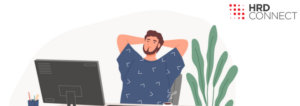J Murphy & Sons on maximising employee wellbeing today
- 6 Min Read
Dawn Moore, group people director of J. Murphy & Sons Limited, outlines how her firm has launched a range of initiatives to aid mental health and wellbeing in teams.
- Author: Dawn Moore
- Date published: May 20, 2021
- Categories

There is a strong push for an equitable work-life balance more than ever and that’s not something that’s new, but has risen to the top of people’s hierarchy of needs as a result of the last year.
What we’re also seeing is a real increase in people being open minded about what they do for work; both internally and externally, I’m hearing increasing numbers of people talk about personal fulfilment. It’s about not necessarily the best salary, but more about the team that professionals work with and how professionals feel in the workplace, which is a common thread across all generations.
The sheer diversity of talent that’s available, and the flexibility of their thinking, is greater than ever, both in our company and externally. I think the challenge from an HR strategy perspective is making sure that as many groups as possible feel equally engaged in the opportunities that you have, the type of business that you are, and how you do things.
Professionals are increasingly looking for role models, regardless of their age, and looking at the the type of jobs that they do, saying ‘would I want to work at that organisation? Can I see people like me in it?’
HR strategies have to understand that and account for it and be prepared for that broad reach. It can even be something as simple as ensuring your organisation is accurately reflected in simple imagery that you might use, the basic literature, or even on the website. It isn’t always necessarily the most expensive things that are effective in a challenge.
Addressing co-located and remote staff
At J. Murphy & Sons Limited, we have a variety of jobs that our professionals undertake, but we have certainly bought into the concept of flexible locations. A good example would be rather than people travelling into a particular office, because that’s where they always have been, they can take time during the working week to get to know some of our project locations, which might be closer to where they live, or they can be far more flexible as to where they work from.
We’re fortunate to be a national and an international business. For example, I look at the UK, which will have hundreds of project locations at any one time.
People can physically build connections in different ways if that’s what they want. I think people are looking for more of the balance between work and home where that’s possible, and we’re certainly engaged with that already.
We’ll continue with that going forward, we’ve made a huge investment in technology, as most organisations have to not only deploy that in 2020, but to allow it to continue to happen.
I think from our perspective, where I mentioned at the beginning, things like agile working can mean a range of different things. Two thirds of our workforce don’t have working remotely as an option, so we’re doing a real education piece around what agile working can look like in all sorts of forms, particularly when working from home isn’t an option.
It doesn’t mean people can’t enjoy more flexibility in that area. I have to say some of the best examples of agile working actually already exist on our projects and have done for a number of years.
The need for flexibility to improve operations
Much of that comes from effective leadership and conversations with your people, and that the best example I’ve seen at Murphy are those leaders on projects who sit down at the start of every week, they have a core number of hours they need to cover, but decide between the team, how they’re going to do it in a variety of ways. It might be slightly tweaked shift patterns to suit individual circumstances, the delivery pattern might vary week to week, but those hours are covered.
We’ll be doing more work around those quality conversations, because they tend to have the best outcome when it comes to agility and flexibility.
The investment in the operational side of health and safety has always been vast and and not only necessary, but essential to us in terms of making people feel comfortable. I think that’s only accelerated from last year. With additional investment in those measures, I think the really big development on our agenda was around mental health; we have more mental health ambassadors and first aiders than ever, that has taken no encouragement, it has been our employees engaging with it.
Encouraging peer-to-peer support
That’s the real benefit, particularly over last year, where people had to continue to come to a physical workplace because of the job that they do, and they’ve had to get over some of the wider fears of doing that. We have an important part of our people strategy, which says we want people to feel secure and comfortable at work and to be themselves.
Interestingly, the mental health agenda has become a big part of that, where colleagues are looking to other colleagues to feel supported if they have a difficult day, or particularly around mental health and wellbeing challenges.
We encourage our people to, first of all, take advantage of that peer to peer support. That is working extremely well in an operational business like ours, with all sorts of shift patterns and where nine to five support isn’t always what a particular type of role or team might need. It needs to be available to all the time.
I think we have been fortunate in a sector like infrastructure that we work in a business that has continued. It hasn’t been without its challenges and there have been some bumps in the road, but I think we have learned a lot. The real key learnings have come from really listening to what our employees have to say.
If I was to pick anything that’s a priority for the HR strategy this year, it’s to continue that asking and listening.









